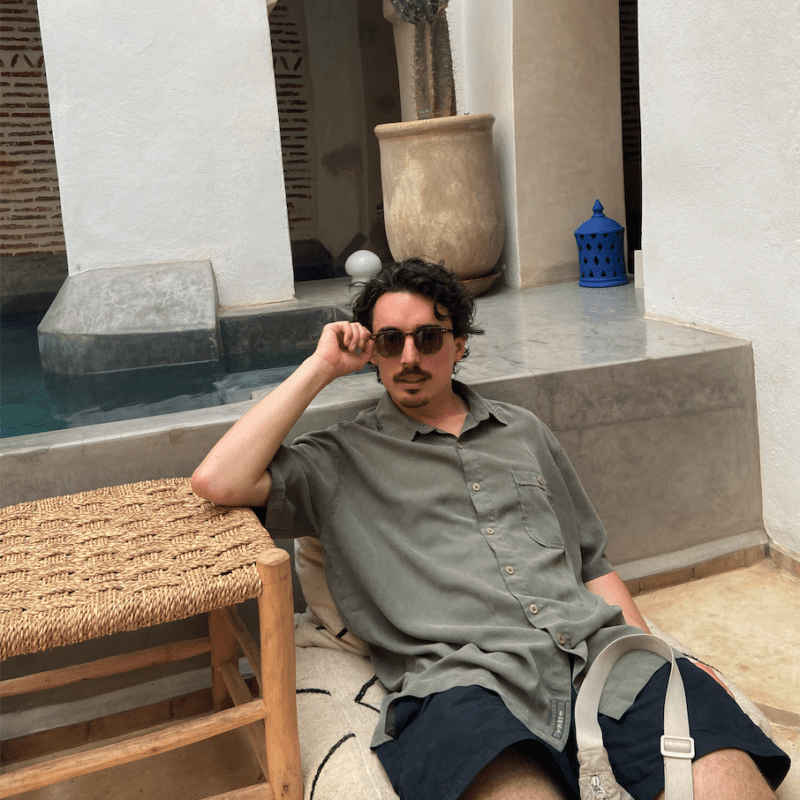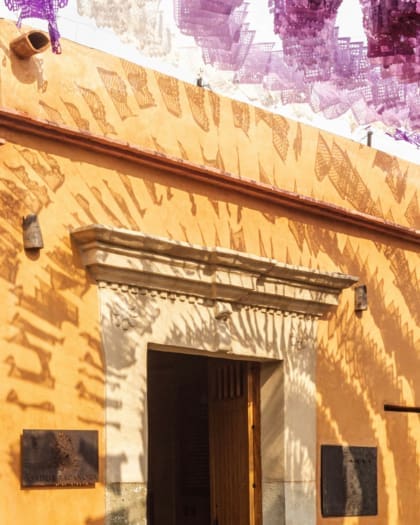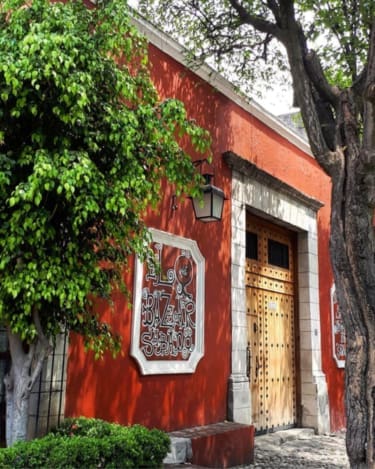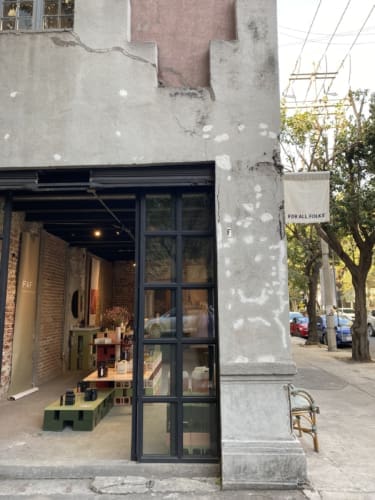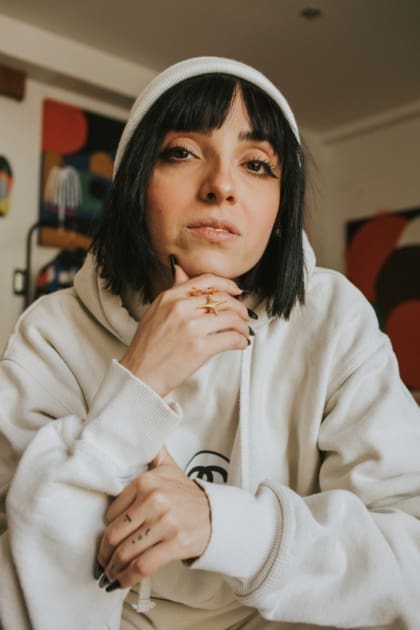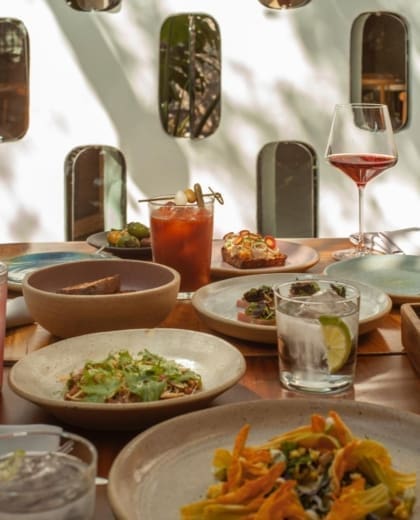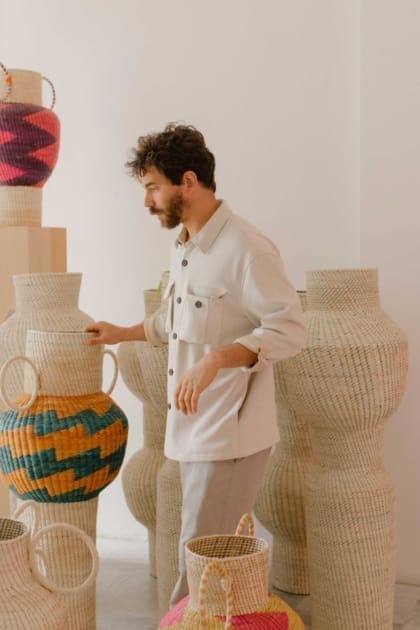
Javier Reyes of Oaxaca’s rrres studio on modern Mexican craft
Javier Reyes, the founder of rrres studio, abruptly swapped life in Barcelona for Oaxaca to work closely with local craftspeople. We hear how the Dominican designer is inspired by the Mexican state
Down a cobbled street between the brightly painted low rise buildings of Barrio de Jalatlaco in Oaxaca de Juárez, Mexico, a small design studio houses a collection of equally bright designs. Textiles woven from hand-dyed wool cover the floors and hang from the walls, their colourful geometric patterns evoking the forms of palm trees, moons and desert scrub. Rounded sculptures made from woven palm leaves stand like curvaceous pillars beside raw clay pots whose exaggerated arms extend upwards as if in greeting. The stoneware vessels vary in tone from natural earth to burned red and charcoal black, depending on how the clay was treated.
The pieces were made in collaboration with local craftspeople who live in nearby communities in Oaxaca, and are designed by Javier Reyes, the Dominican-born founder of rrres studio. Reyes is young, dark-haired and, right now, a little overworked, multitasking between getting photography and videos produced for the studio’s new website, and collaborating with his network of craftspeople for rrres’s next collection. He’s been working on the studio since 2017, when he first visited Oaxaca from his home in Barcelona. Since then, his work – which is organised under his four principal materials of clay, wool, cotton and palm – has been featured in T Magazine, FT and MoMA Design Store.
As part of our ongoing How Did I Get Here series, we speak with the designer to hear how he decided to move from Barcelona to Oaxaca to set up his studio, how he nurtures his working relationship with his craftspeople, and what’s next for his practice.
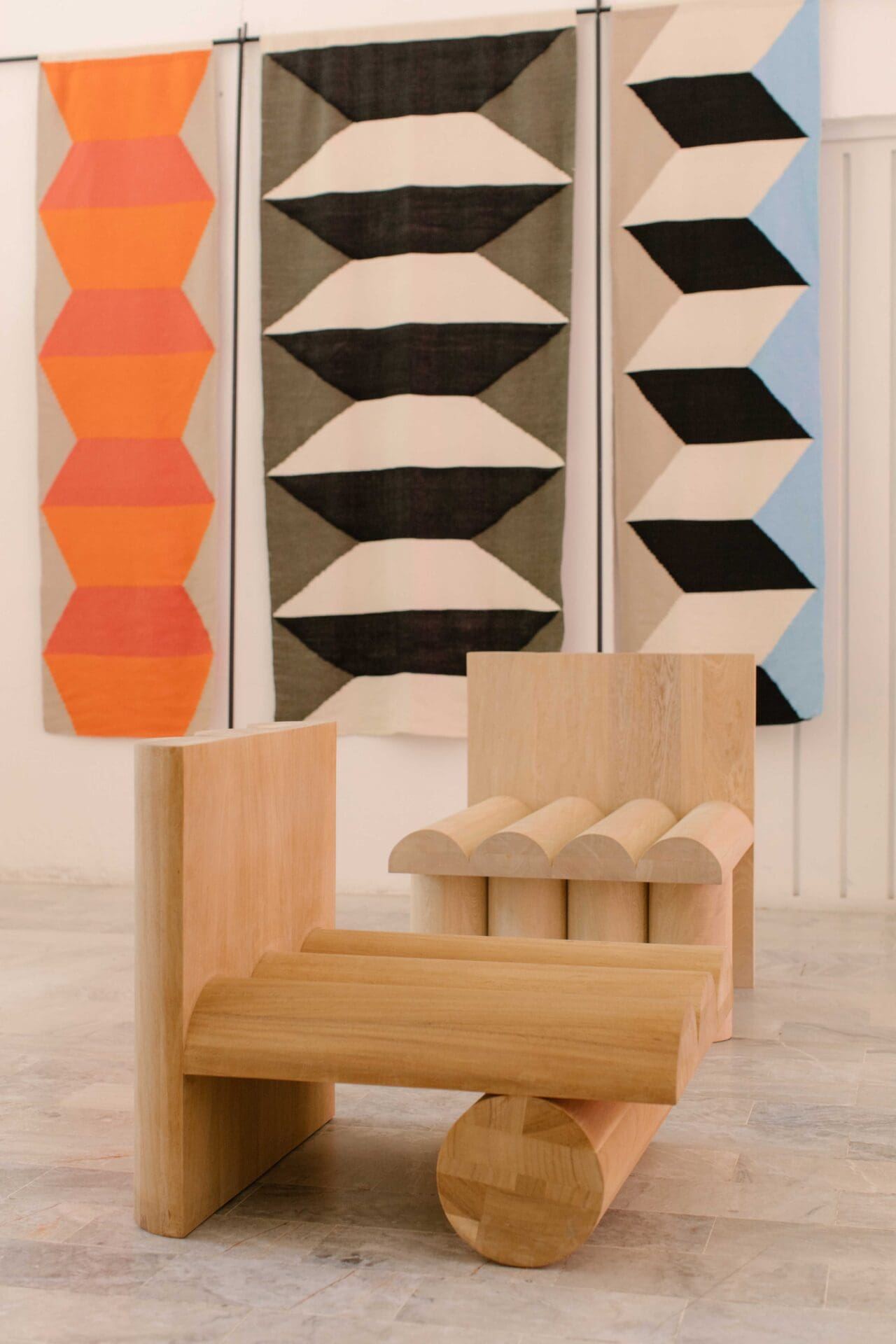
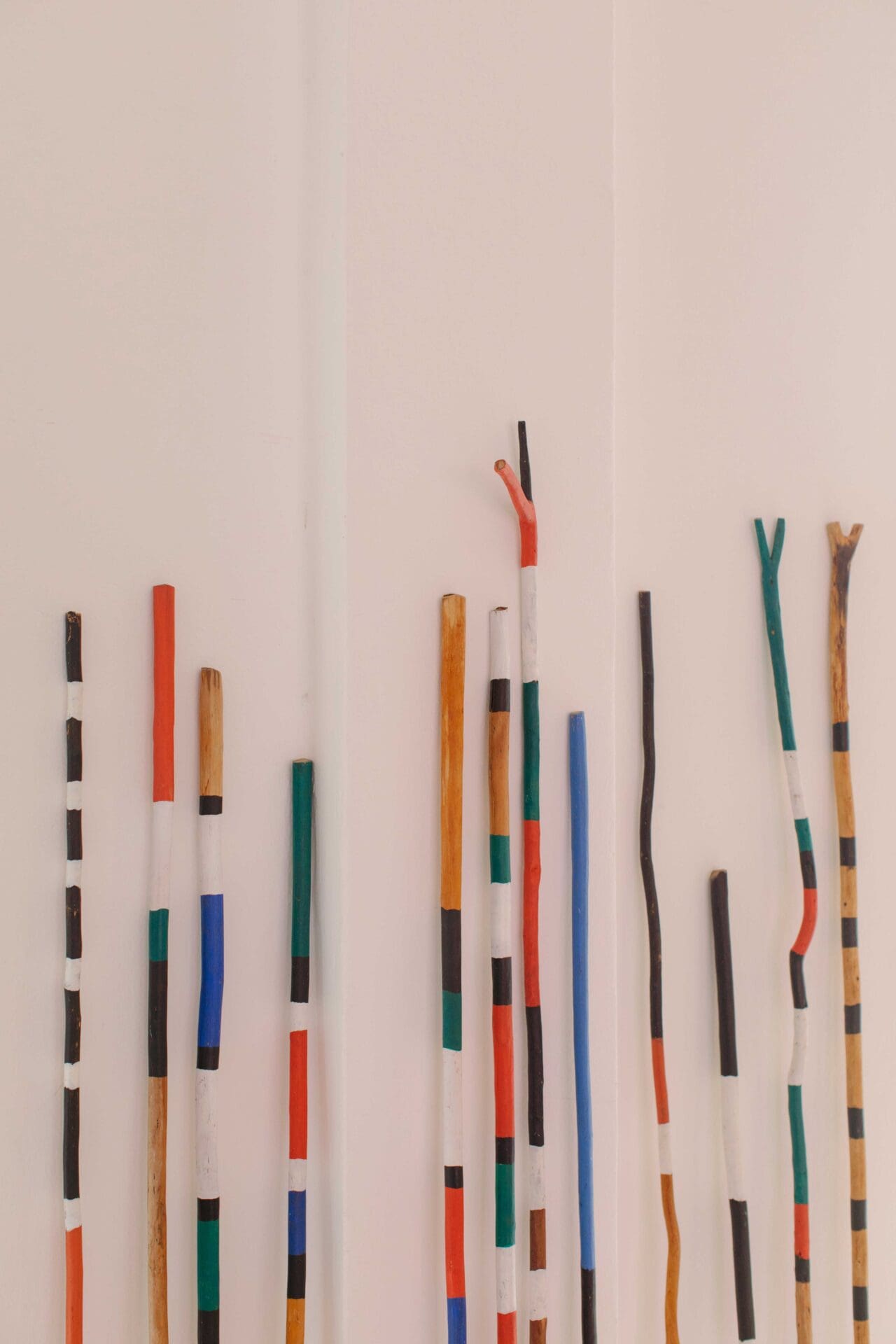
Moving to Oaxaca
How did you come about moving to Oaxaca?
I first came to Oaxaca in 2017. When I arrived, I was overwhelmed by the tradition. Crafts are still very much alive here, and the indigenous Zapotec heritage is very strong.
At first, I spent a year going back and forth between Oaxaca and Barcelona, where I was living at the time. Eventually, I realised the project needed me here, where the artisans were. I didn’t want to curate pieces they were making; I wanted to make a real commitment to them, sit with them, and spend time and patience developing prototypes together. So I left everything in Barcelona, having lived there for five years, with a house and everything. Once I moved to Oaxaca, the project really started to make sense.
What’s your relationship like with Oaxaca?
It’s made me appreciate Latin American culture more. When I was growing up in the Dominican Republic, I didn’t appreciate it as this amazing, unique thing; I was mostly looking outside for visual references. But after five years living in Europe, coming to Oaxaca made me realise how special it is. Latin American culture is a melting pot of Indigenous, European and African. I want Latin Americans to appreciate it, to open their eyes, and see their traditional crafts as a luxury and not some cutesy thing.
"The purpose of design is to improve people's lives in some way"
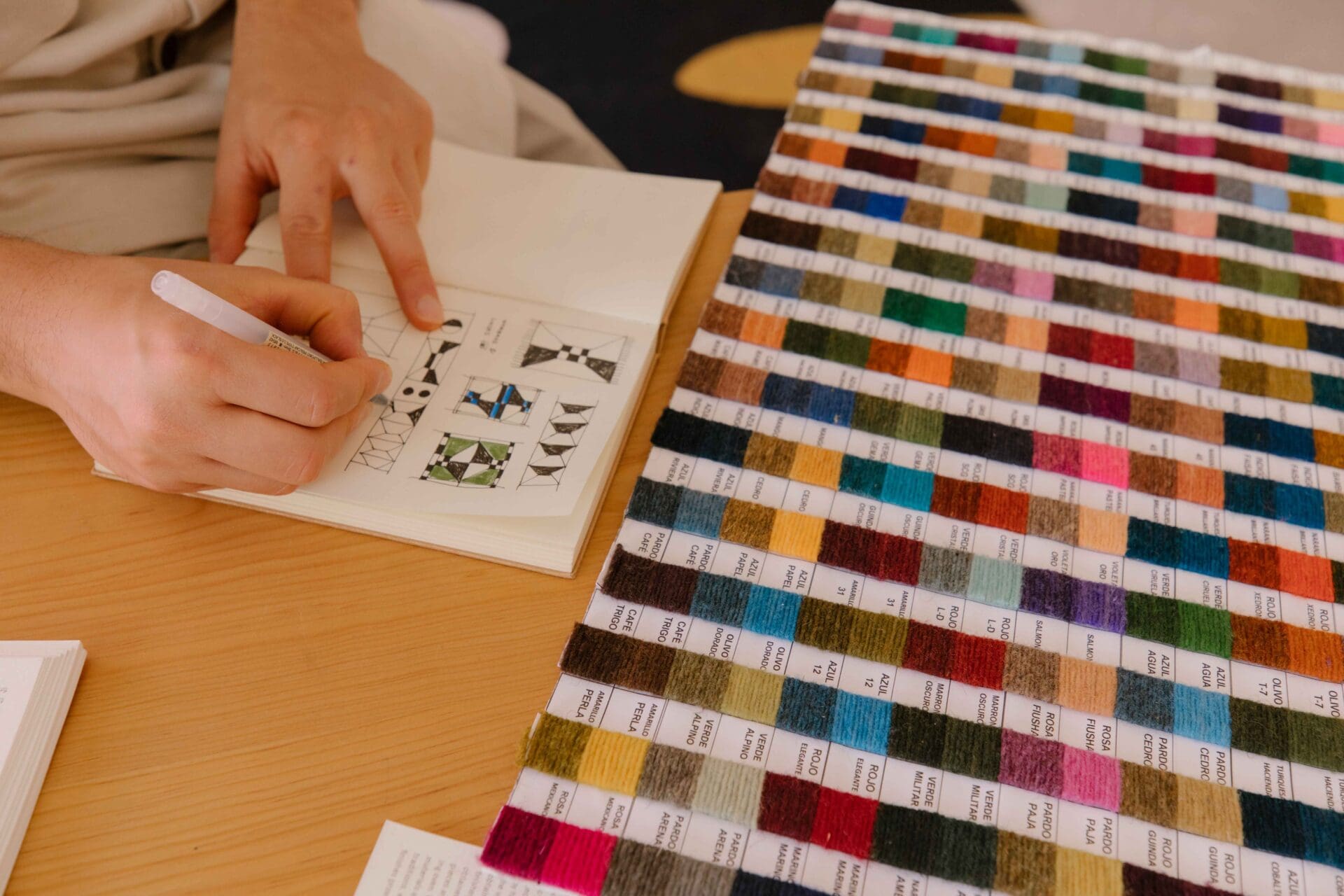
Oaxacan craft
How did you first meet the craftspeople you now work with?
There are specific communities here that are associated with certain crafts. I found the people I work with by literally going round knocking on doors. Specifically, I wanted to work with people in the communities that weren’t already up and running. There are plenty of established studios that already have a lot of work and are doing really well. I didn’t want to have it easy. I believe the purpose of design is to improve people’s lives in some way. In my case, it’s not the end product that improves someone’s life, but the process of how we’re making it. I work with people that want to work hard, and simply haven’t had the opportunity or access to do so.
I’ve been working with the same makers for the last four years. The beautiful thing is, we’ve built a relationship – they see I’m not just dropping in to commission a few pieces and then disappearing again. It’s a long-term collaboration. They’re really making an effort and going out of their traditional ways to create these pieces, so I show them that I appreciate them. We have each other’s back.


Javier Reyes on his creative process
How do your collaborations work – do you have a design in mind already?
When I first started this project, I always had a specific idea I wanted to pursue, but it never worked, because precise production is more or less impossible and undesirable when working with traditional crafts. Now, I’m always in a conversation with the maker, and I don’t design until I’ve already done a few tests and prototypes with them. After we’ve done that, I feel more confident in proposing the designs and coming up with the concept.
When I’m working with new artisans or introducing a new technique, my approach is always ‘let me hear you’. I want to find out what they do. That’s been the key to success. It’s not so much what I want to do, it’s what we can do together – what’s possible. And it’s beautiful. Sometimes you don’t expect the result, and you’re open and you’re sitting there having this conversation and trying things, and you arrive at something completely new.
I feel that a good designer is someone that can see the potential in the unexpected. Maybe you were looking for a result, and you didn’t get to that, but maybe you can play with what you got, maybe you can turn it upside down. It’s a beautiful process, but sometimes a challenging and frightening one too.
I’d like to eventually introduce other techniques, like the backstrap loom. It’s an Indigenous, pre-Hispanic technique. When the Spanish arrived, they introduced the pedal loom, which a lot of weavers in Oaxaca use, but there are still some communities that keep the tradition of the backstrap loom alive. It’s tied around the waist, and attached to a tree.
What inspires you when you’re coming up with designs?
I’m inspired by the surreal. Last year I was planning a trip to the States, and I worked out it was cheaper to cross the border from Tijuana to San Diego, rather than fly straight into the US. But because of the pandemic, I didn’t know you couldn’t cross the border anymore unless you were a resident of the US. So I was stuck in Tijuana for five days, which was a very weird experience. I’ve been there twice before, and it’s the most insane place ever. It’s very dense, a melting pot of many different Latin American cultures, full of people trying to cross to the US to pursue the American dream. That energy, mixed with the surrealness of the architecture, was very inspiring to me.
I’m also inspired by the traditional values here. For instance, the ceramics in our collection are inspired by the artisans I work with. Ceramics in Oaxaca are mostly made by women. When I was working with the ceramicist, I saw the connection she had with her work. It felt very feminine. So I began thinking about my relationship with women and motherhood.
Similarly, the palm series we made is called Family, inspired by the artisan family I work with – a husband, wife and two kids. The four designs are named father, mother, son, and daughter. I wanted to honour the Latin American value of the union of family. We have many things that are really bad that I am not proud of, but one of the incredible things I recognise is the family union.

Javier Reyes on travel
Do you do a lot of travelling?
I mostly go back to the Dominican Republic or visit the US. It’s been four years since I’ve been to Europe – it would be very interesting to go back. I like travelling and taking notes about other people’s culture and comparing and learning; any circumstances or situations that take you out of your normal surroundings creates a positive experience.
I go to the US a lot because we have a lot of clients there. I’m trying to make something happen there, to establish a place where we can show the work, and have a more permanent dialogue. We shall see.
What journey have you taken that has impacted you the most?
I think my move to Oaxaca. After five years in Barcelona, I was not happy there. This project made me move, and, it’s not like all my problems got solved, but it made sense, and my life took another path. Living in Oaxaca is a totally different lifestyle. It’s a beautiful place. A lot of people fall in love with it, but they come here for a year or a few months, and then they move out again. Moving to Oaxaca – I can’t say it has changed my whole life – but it has made a clear difference in the way I want to work.
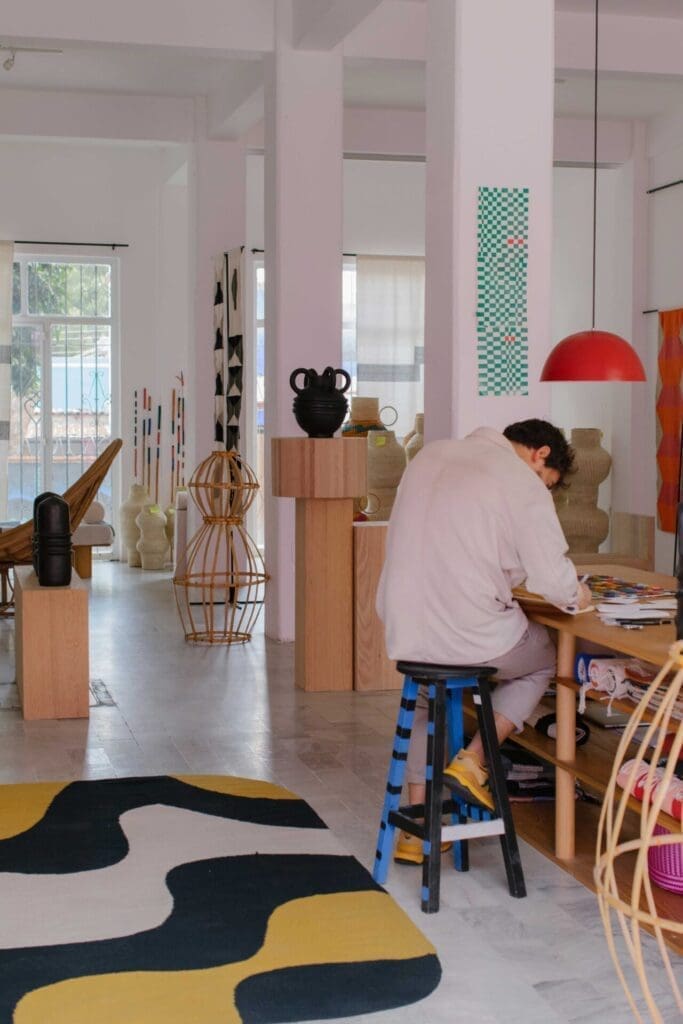
Is there a dream destination that you would love to go to one day that you haven’t visited yet?
I’ve been saying to my partner, we should flip out to Japan. I don’t have any specific place that I really want to go to, but any place that takes me out of my element and immerses me in a completely different culture – that’s my dream. I always get very inspired by that. We all have different paths in this life, but one for many of us is trying to understand what the hell humans are. We have such a complex, diverse way of seeing things.
How does Oaxaca compare with the Dominican Republic?
We have a lot of similarities. When I arrived in Mexico, it felt like home; I understood the codes, the people. But when I compare it to the Dominican Republic and the Caribbean, there’s a stronger connection to African culture there. Oaxaca feels like Switzerland in comparison. The driving in the Dominican Republic is insane. There are no rules at all. You’re on your own – it’s something we all grew up with. The government won’t help you, which makes our society a little bit closer; you rely on your neighbours more. In the capital, Santo Domingo, it’s pretty chaotic. People shout in the street and blast music. You don’t really see that in Oaxaca. People here are more shy. The indigenous culture here is not dancing and salsa – it is very different.
"I want to empower the image of artisans in any way possible, without romanticising their life or their way
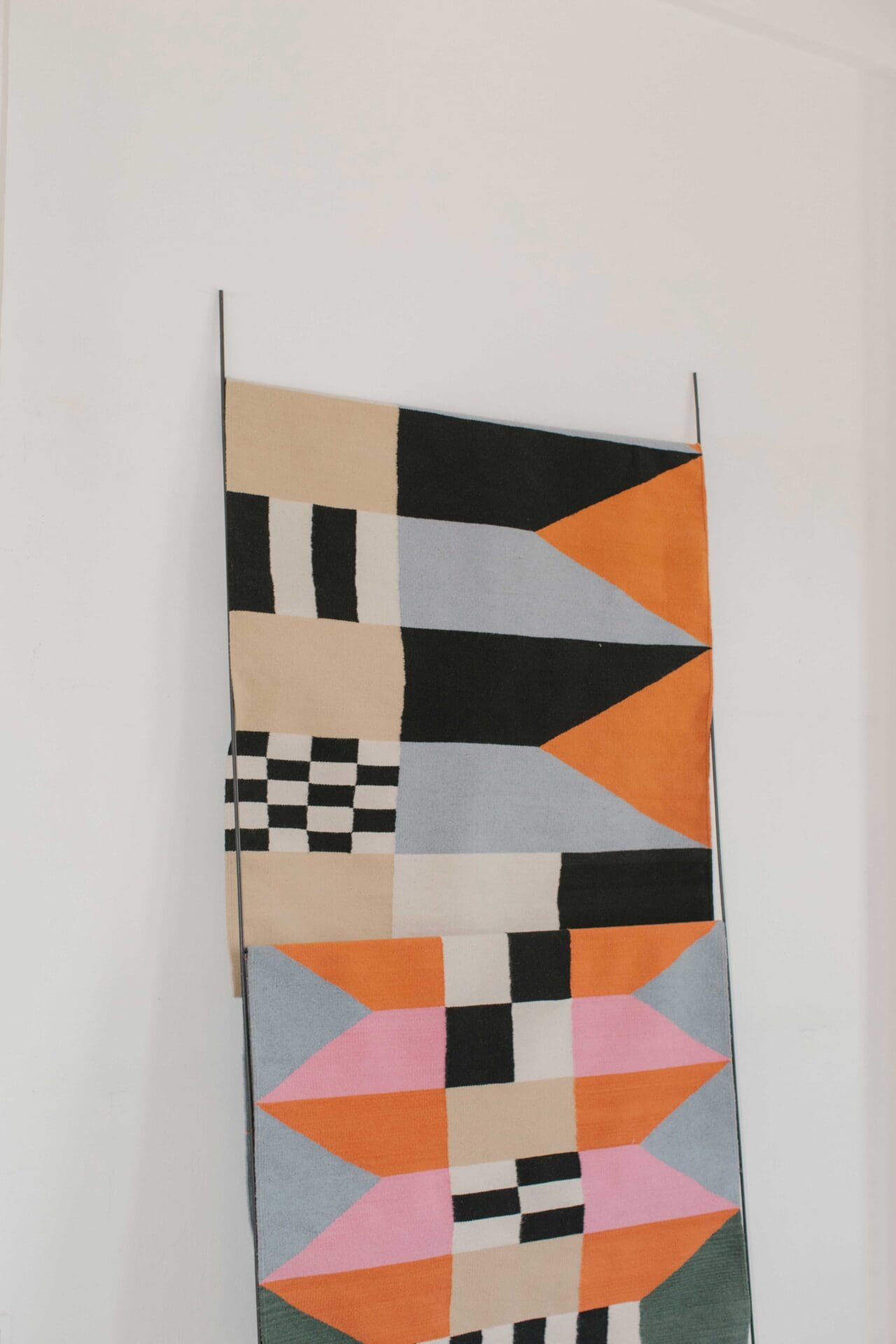

When people see your pieces and interact with them, what do you hope they feel?
When you receive a piece from us, it comes with a history of the Zapotec people. I want people to connect with the process, the history, how this piece was made. It’s not just that an artisan made it, it is the handing down of tradition through history that made this piece possible.
Each piece comes with its own provenance: how it’s made by this person or this family, and how it took them 20, 30, or 60 days to make it. I want people to understand the value of time, knowing the value of something through waiting.
I want to celebrate the makers, but doing so without cliched romanticising of their culture. I want to show them more objectively – not like ‘oh. these are some cute señores and señoras’ – they are badasses. They are getting their workshops moving forward. I want to empower the image of artisans in any way possible, without romanticising their life or their ways.
Discover interviews with global creatives as part of our ongoing How Did I Get Here series on ROADBOOK
